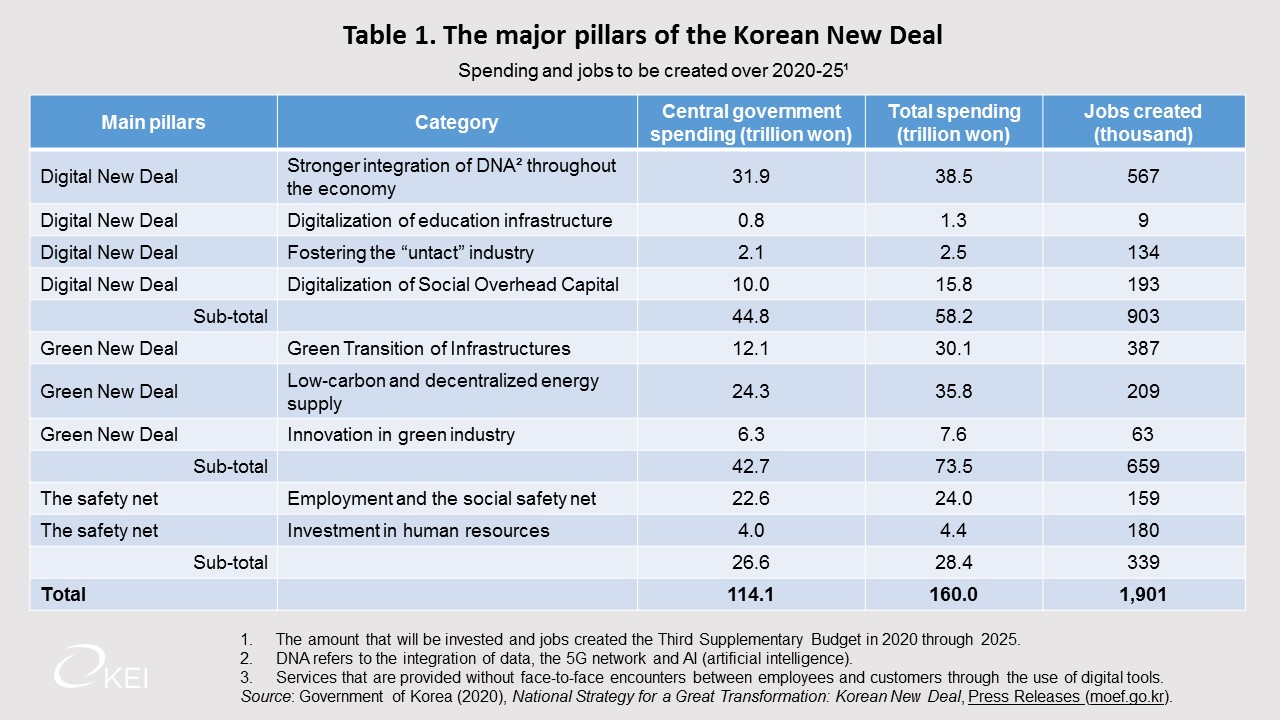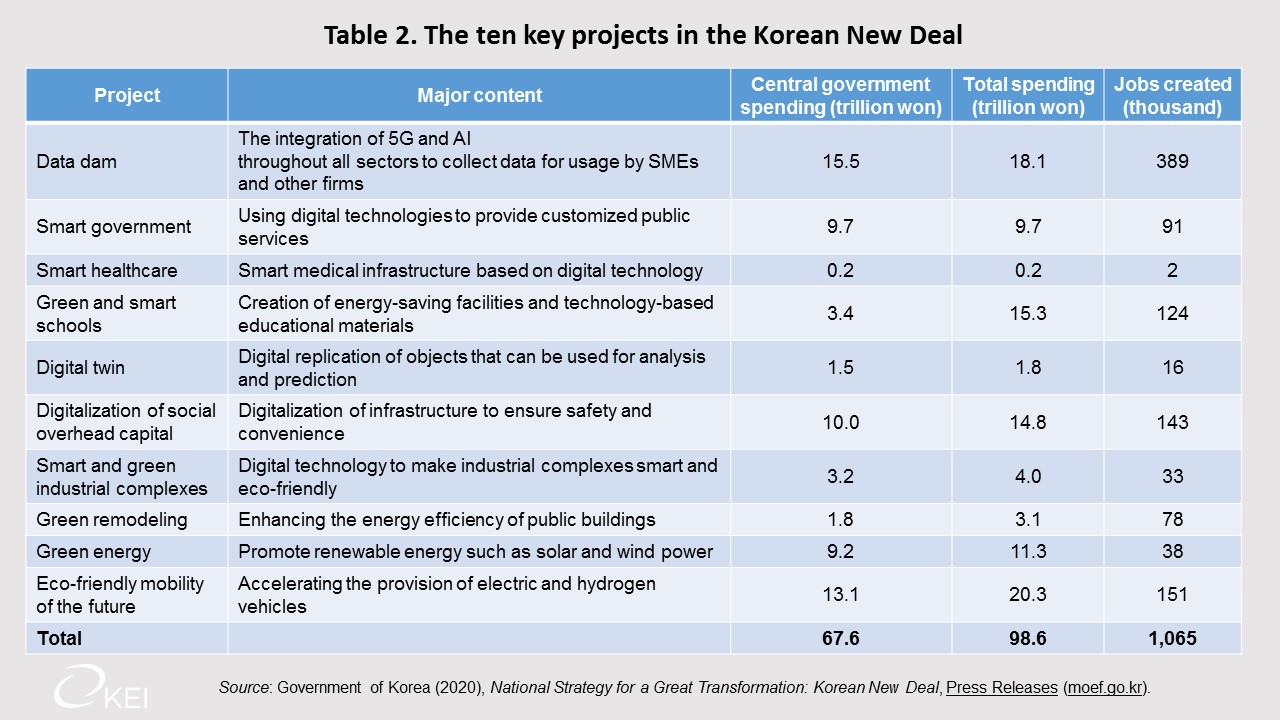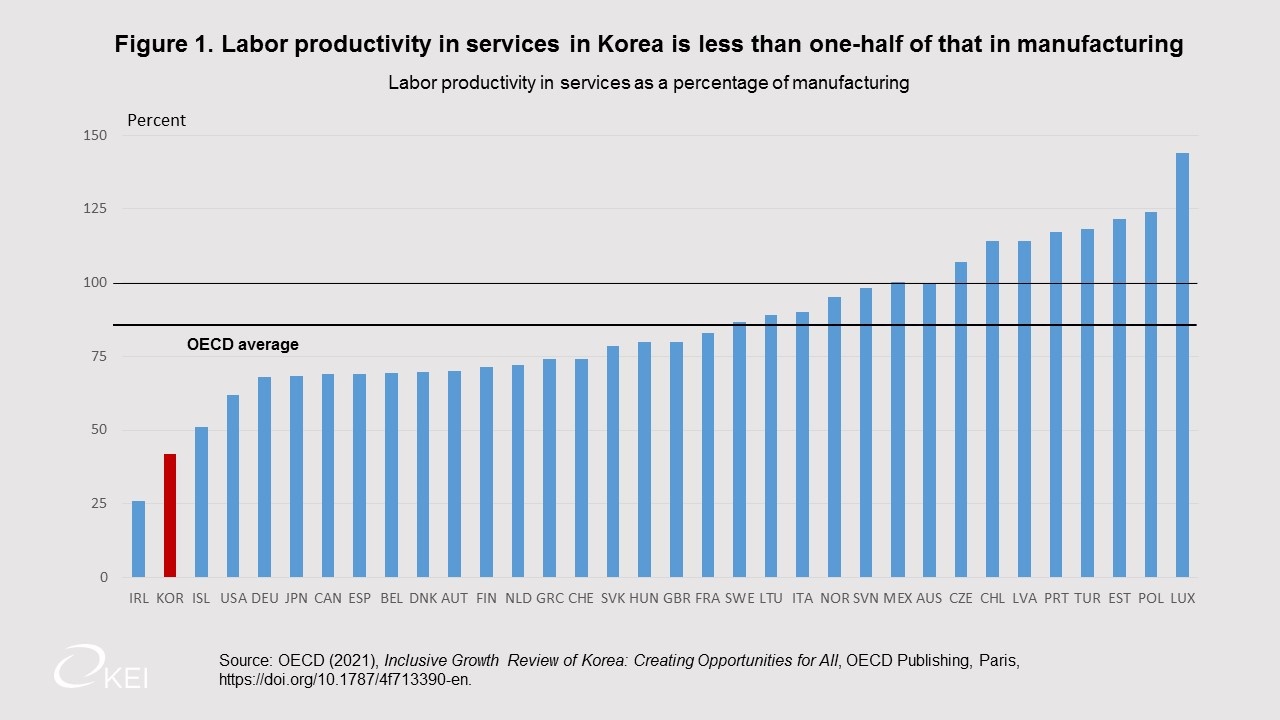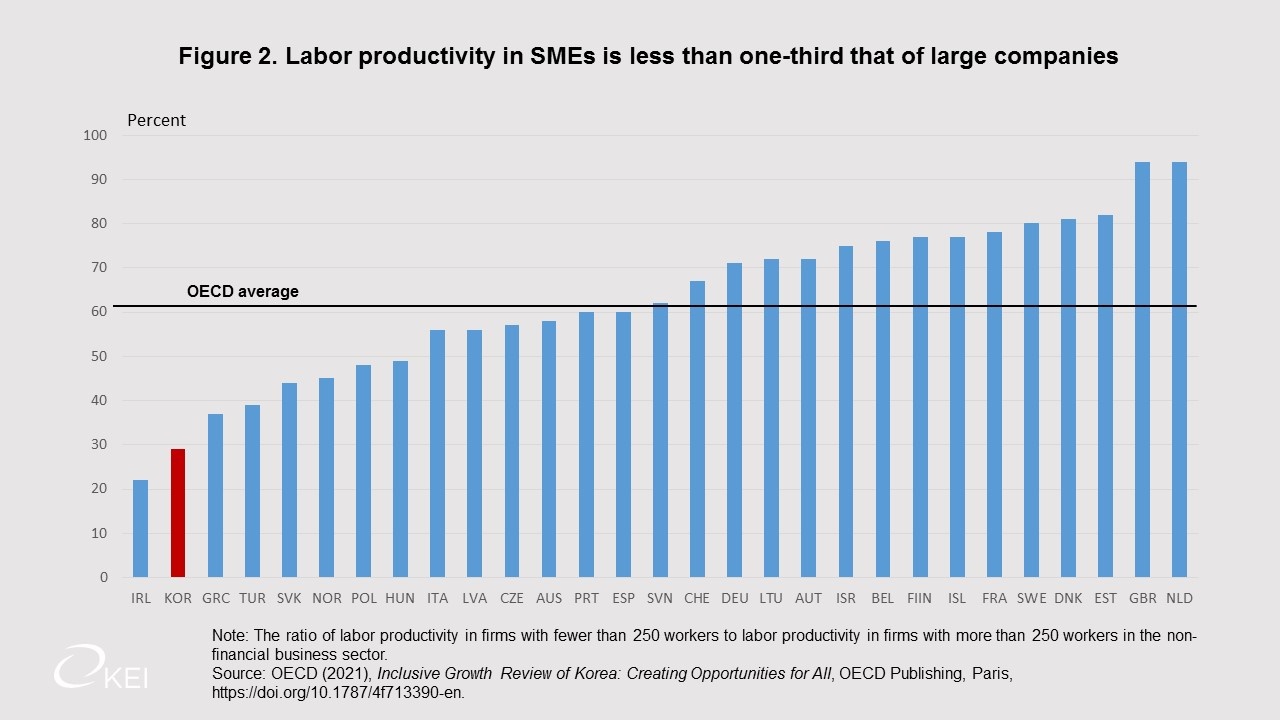The Peninsula
The Korean New Deal

One year ago, President Moon Jae-in launched the Korean New Deal, which aims to “set the foundation for Korea’s next 100 years.” The New Deal is a national development strategy with three main objectives. First, create jobs, both government-supported positions for low-skilled workers and jobs that support the transition towards a digital and green economy. Second, build the infrastructure for a digital and green economy that will boost investment and support job creation. Third, set the groundwork for Korea to lead the global community in the post COVID-19 era (Government of Korea, 2020). The government aims to transform Korea:
- From a fast follower to a first-mover economy
- From a carbon-dependent to a low-carbon economy
- From a socially-divided to an inclusive society
The New Deal envisages investment of 160 trillion won over 2020-25, with 114 trillion won (5.9% of 2020 GDP) financed by the central government. The additional government spending thus amounts to around 1% of GDP each year. The remainder is to be provided by local governments, state-run institutions and the private sector. Regulatory reforms in certain sectors, such as transportation and electricity, are planned to facilitate private investment.
The third supplementary budget in 2020 started the New Deal with investment of 4.8 trillion won, with another 21 trillion won included in the 2021 budget. The New Deal is projected to create 1.9 million jobs (7.1% of 2020 employment) by 2025. It includes three pillars – the Digital New Deal, the Green New Deal and Strengthening the Social Safety Net, which cover eight categories (Table 1). The New Deal includes 28 specific projects (eight are in the Digital New Deal, six in the Green New Deal and eight in the safety net).

In addition, “ten key projects that contribute significantly to the creation of jobs and new industries, and to a well-balanced form of regional development have been selected as the building blocks of the forthcoming transformation” (Government of Korea, 2021). Three projects fall under both the Digital New Deal and the Green New Deal, while four belong to both the Digital and Green New Deals (Table 2). The ten projects account for 62% of the expected investment and 56% of the expected job gains.

Analysis of the Korean New Deal
The new national strategy is an ambitious plan to develop new drivers for economic growth, address climate change and create a more inclusive society. It provides a strong foundation for the post-COVID19 environment. The Digital New Deal focuses on Korea’s comparative advantage: “Korea is a top player in emerging digital technologies, with an outstanding digital infrastructure and a dynamic ICT sector” (OECD, 2020). The Green New Deal should play an essential role in achieving net-zero greenhouse gas emissions by 2050, as President Moon pledged in October 2020. Moreover, it will help Korea reach a more ambitious 2030 target to put it on track for carbon neutrality. Strengthening the safety net is another priority to cope with income inequality and poverty.
To be fully effective, the Korean New Deal should be accompanied by a range of reforms. Reforming Korea’s product market regulation, which ranks as the fourth-most stringent among OECD countries, is a priority. Effectively using regulatory sandboxes would help identify and improve regulations that hinder the adoption and diffusion of digital technologies. Entrepreneurship should be promoted by relaxing entry barriers and expanding venture capital. Barriers to international trade and inflows of foreign direct investment should also be liberalized.
Achieving President Moon’s vision for an “innovative and inclusive country for all” requires that the New Deal benefit the entire economy. According to an OECD study, “past Korean winner-picking and specialization policies may have weakened competition and protected incumbents, contributing to productivity gaps across firms and sectors” (OECD, 2021). Those productivity gaps are still significant. First, labor productivity in Korea’s service sector is only 42% of its manufacturing sector, well below the 85% OECD average (Figure 1). Given that the service sector accounts for more than 60% of the economy, its low productivity is a considerable drag on the economy.

Second, the productivity gap between large companies and small and medium-sized enterprises (SMEs) is large in Korea. In the OECD, SME labor productivity averages 62% of large companies, but it is less than 30% in Korea (Figure 2). The significant gaps are a legacy of an industrial policy that favored the production of manufactures for export by large companies. The productivity gaps are reflected in big income gaps, boosting inequality and poverty. Indeed, the share of full-time workers earning less than two-thirds of median earnings in Korea in 2017 was the third highest among OECD countries.

Some of the key projects (Table 2) are likely to benefit large existing firms primarily. For example, the “Eco-friendly mobility of the future,” the largest key project in terms of expected investment target, set a goal of increasing the number of electric vehicles by 12 times between 2019 and 2025. This is likely to benefit existing car producers, who are the leaders in this field.
The project also targets an increase in the number of hydrogen vehicles by 40 times – from 5,000 in 2020 to 200,000 by 2025. Korea’s Hydrogen Roadmap estimates that with production of 100,000 units, hydrogen vehicles would be priced competitively with internal combustion engine vehicles. To encourage the sale of hydrogen vehicles domestically, the roadmap calls for subsidizing the purchase price of vehicles and investing in R&D. The government’s vision for hydrogen is shared by major industrial firms, most notably the Hyundai Motors Group, the world’s largest seller of hydrogen vehicles. Other large conglomerates, such as Doosan and Hanwha, are also active in this area (Stangarone, 2021).
Realizing the objective of an inclusive economy requires that the benefits of digitalization be diffused throughout the economy, including the service sector and SMEs. This requires achieving the first point in the Digital New Deal (Table 1): “Stronger integration of DNA throughout the economy – promoting the use and integration of data, the 5G network and AI (DNA) throughout all sectors to create new digital products and services, while also enhancing the productivity of the Korean economy.” One of the key projects, the creation of smart and green industrial complexes (Table 2), would also help diffuse digital technologies. This is in line with the government’s goal of increasing the number of SME smart factories from 19,799 at the end of 2020 to 30,000 by 2022 (Pak et al., 2021).
Randall Jones is a Non-Resident Fellow at the Korea Economic Institute of America. The views expressed here are the author’s alone.
Photo from the Blue House Twitter Feed. Graphics by Juni Kim, Senior Manager for Operations and Technology at the Korea Economic Institute of America.
References
OECD (2020), OECD Economic Survey of Korea 2020, OECD Publishing, Paris, https://doi.org/10.1787/2dde9480-en.
OECD (2021), Inclusive Growth Review of Korea: Creating Opportunities for All, OECD Publishing, Paris, https://doi.org/10.1787/4f713390-en
Pak, M., C. André and J. Beom (2021), “Digitalization in Korea: A Path to Better Shared Prosperity?”, Korea’s Economy 2021, the Korea Economic Institute, Washington (forthcoming).
Stangarone, T. (2021), “South Korean Efforts to Transition to a Hydrogen Economy,” Clean Technology and Environmental Policy, Vol. 23, https://doi.org/10.1007/s10098-020-01936-6.
